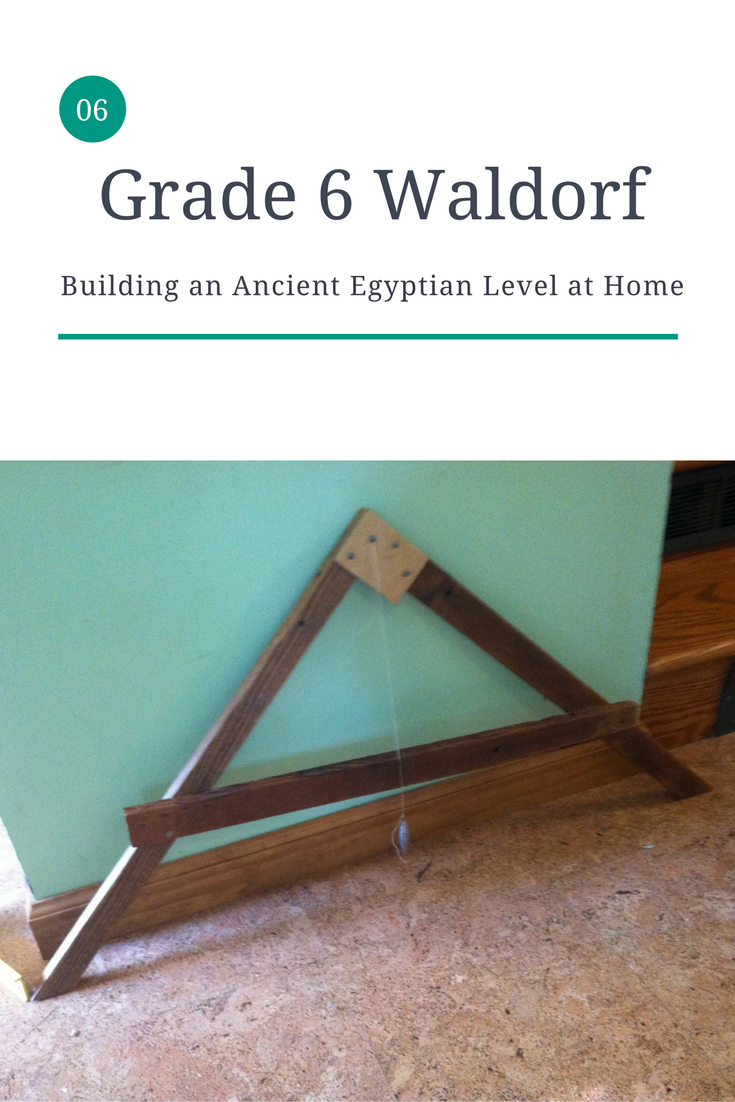Grades 1 - 4
The journey to Geometry begins with four years of careful Form Drawing (also used to introduce Penmanship, this is the very first block of Grade 1).

Living Lines: Form Drawing Inspiration for Steiner-Waldorf Teachers
by Henrik Thaulow
Straight Line Forms: A Recap
blog post, May 2024
Grade 5
Jamie York recommends doing "Freehand Geometry and Fifth Grade Fractions" as Main Lesson Block #1 of 3 math blocks for the fifth grade year.
If you don't have Jamie's book for grades 1-5 (the Freehand Geometry info is on page 83), you could instead download Volume 2: Freehand Form Drawing and Basic Geometric Construction in Grades 4 and 5 by Ernst Schuberth, which is available FREE as a PDF from the Online Waldorf Library.

Ernst Schuberth has written wonderful books on the teaching of geometry, but one should note that they are out of step with the progression of math skills recommended by Jamie York.
Jamie writes on page 83 of his Making Math Meaningful: A Source Book for Teaching Math in Grades One Through Five, "We recommend freehand geometry in fifth grade, and geometric drawing (with compass and straightedge) for sixth grade, whereas Schuberth lists both of these for a year earlier."
Thus, Schuberth's grade 4 & 5 book can be seen as a grade 5 & 6 book. Here are his grade 4 skills notes regarding lessons in Geometric Drawing, which we may use for this block:
"Every teacher can decide for himself where an appropriate place for geometric form drawing is in the lesson plan. For example, as a part of a form drawing block or tacked onto the end of an arithmetic block would certainly be suitable. Taking the seasons into consideration, I always found that the winter is the best time for geometry main lessons." (page 13)
"Geometry in the fifth grade is similar to that in the fourth grade in as far as it is still free-hand geometry and viewed as an extension of form drawing. The construction descriptions suggested here belong, in a narrower sense, to the mathematics lessons." (page 43)
Students are NOT given a straight edge or a compass until 6th grade!
Exercises covered in Schuberth's book:
- circle
from the circle to the ellipse
points of a circle
tangents
stargazing
lemniscate
clocks
angle measurement
degrees
acute, obtuse, right, straight, and full angles
intersecting lines
vertical, straight, and supplementary angles
vertex
parallel lines
from the circle to the triangle
triangle exercises
from the circle to the square
square, rectangle, rhombus, parallelogram, trapezoid, deltoid
quadrangle exercises
light and shadow around a sphere
It's worth mentioning that the many years of Handwork that the children have done have also laid a helpful foundation for spatial reasoning! In Zen and the Art of Knitting: Exploring the Links Between Knitting, Spirituality, and Creativity Bernadette Murphy devotes an entire chapter to Waldorf schools. She describes seeing the following in a grade 5 Handwork class:
- The girl making the blue and purple sock realizes, after turning the heel, that the foot's too big. She tries it on to assess the problem. Too wide, she decides. The helper teacher comes over to witness the predicament. I'm thinking of all the different things that the helper might tell the girl how to fix it, working out in my mind what I'd do if the sock were mine. The helper, though, doesn't tell her what to do or give advice.
"What do you think?" she asks the girl. "What could you do to make it work?"
The girl thinks for a moment and announces a set of decreases she could perform to counteract the mistake.
"That might work," the helper says and leaves her to her work.
What an amazing thing: to trust this young girl to figure out the solution to her problem.
Grade 6
In sixth grade we find two Geometry blocks!
The first is the history of Geometry, as found in String, Straight-edge, and Shadow: The Story of Geometry by Julia Diggins.

My notes from teaching this book are here.

Building an Ancient Egyptian Level
blog post, Sep 2016
photos of Natalie's MLB for this block
photos of Becca's MLB for this block
In the second block, the students are given the Tools of Geometry (compass, straightedge) and taught to make detailed and beautiful geometric figures.
-
For this block, I highly recommend two books:
Sheen's Geometry and the Imagination (which also is available FREE as a PDF from the Online Waldorf Library)
and
Barbara Dewey's Waldorf Geometry for Homeschoolers: Grade 6 (available in PDF format for $14.00).
In brief, his book is better for WHAT to do and her book is better for HOW to do it.

Waldorf Geometry for Homeschoolers: Grade 6
by Barbara Dewey

Geometry and the Imagination: The Imaginative Treatment of Geometry in Waldorf Education
by A. Renwick Sheen
my Geometric Drawing webpage
lesson plans for a 14 day block
how to bisect an angle, and divide a circle into 12 equal parts using only a compass and straightedge (Geometric Drawing and the Waldorf School Plan by Hermann von Baravalle, pp.14-15)
how to draw a perpendicular bisector to a given line AB (Geometry Lessons in the Waldorf School vol.2 by Ernst Schuberth, pp.64-65)
how to trisect an angle using a compass, a straightedge, and a strip of paper (von Baravelle, p.22)
Grade 7
A wonderful overview of the entire Algebra & Geometry Main Lesson Block (PDF) in grade 7, available for FREE from Jamie York!
Grade 8
The final Geometry block in middle school is the Platonic Solids.
This post contains affiliate links to materials I truly use for homeschooling. Qualifying purchases provide me with revenue. Thank you for your support!

Platonic Solids: A Main Lesson Block for Class 8
blog post, Apr 2023





 Immersive Experience
Immersive Experience Immersive Experience
Immersive Experience







No comments:
Post a Comment